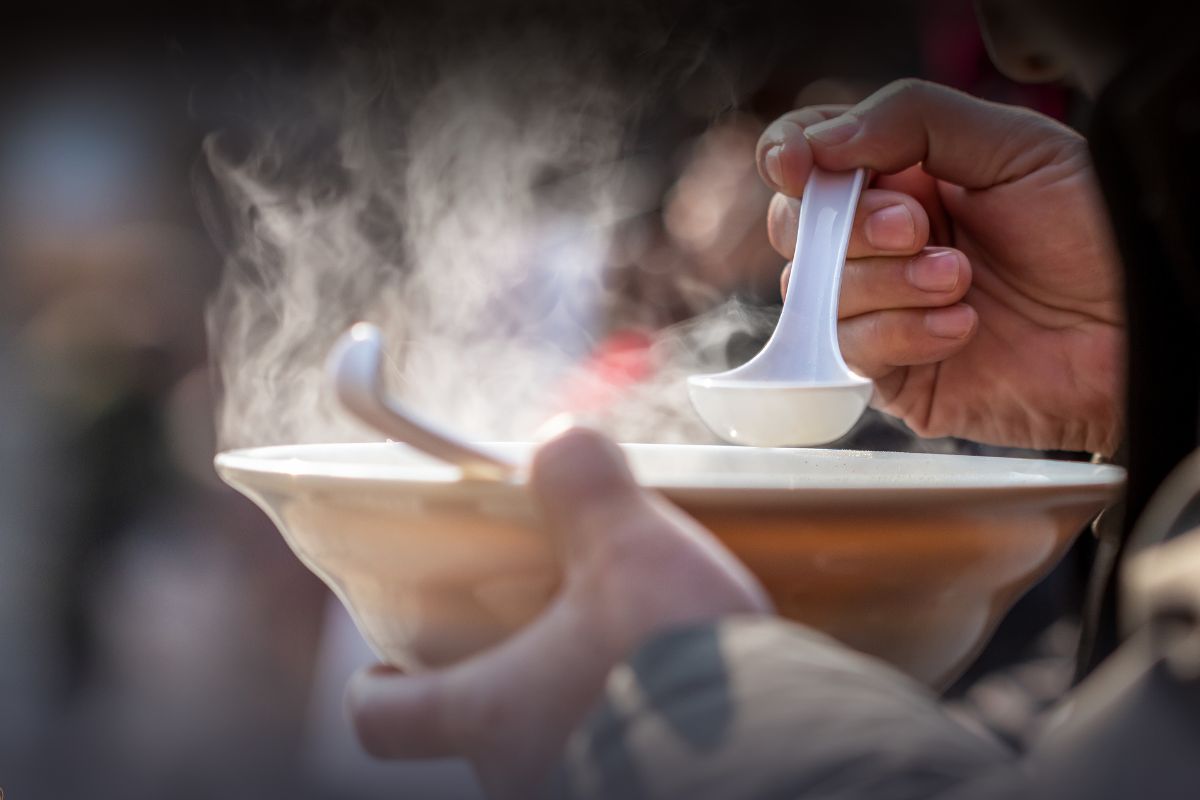Autumn and Winter Delights: The Blissful Elixir of Chinese Soups
During the autumn and winter seasons, as the biting cold winds sweep through, and the earth gradually cools, from Chinese kitchens, wafts of warm steam rise, carrying with them the enticing aroma of simmering soups. In these seasons of autumn and winter, with chilly weather prevailing and the body's Yang Qi naturally retreating, metabolism slows down. It is precisely during this time that a steaming bowl of soup emerges as the prime choice for nourishing the body! Curious to explore more about the mysteries of soup-making? This article will guide you through!
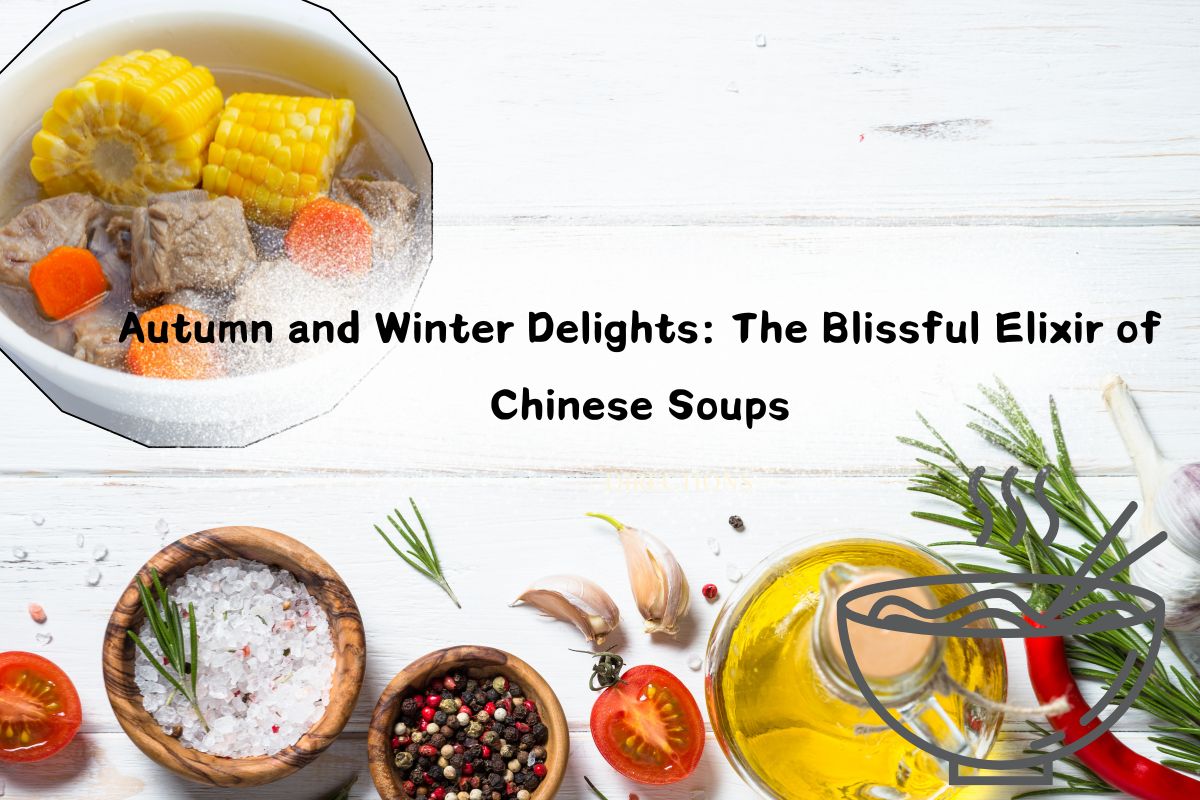
Chinese soup-making places great emphasis on ingredient selection, often aligning with the season and the body's specific requirements. Common ingredients during autumn and winter include lamb, radish, Chinese yam, goji berries, red dates, and dried longan. Lamb, known for its warm nature, provides ample heat to the body in cold seasons, warding off chills; radish, with its lung-soothing and digestive properties, coupled with lamb, balances the meat's warmth while adding a hint of sweetness to the broth. Chinese yam tonifies the spleen and stomach, goji berries nourish the liver and kidneys, while red dates and dried longan nourish the blood and soothe the mind. These ingredients harmonize to create a soup that is not only delicious but also brimming with nourishing effects.
Take, for example, the traditional chicken soup汤(tāng). When Chinese people simmer chicken soup, the selection of chicken is meticulously observed. A mature hen is often the preferred choice for its long growth cycle, firm flesh, and rich nutrition, yielding a flavorful, aromatic chicken broth.
汤 (tāng), noun, soup
Examples:
- 这碗汤味道很好。
This bowl of soup tastes very good.
zhè wǎn tāng wèi dào hěn hǎo 。 - 她正在做蔬菜汤。
She is making vegetable soup.
tā zhèng zài zuò shū cài tāng 。
When selecting a mature hen, individuals pay close attention to its appearance—glossy feathers, bright combs, and lively eyes signify robust health. Moreover, within Chinese culture, chickens symbolize auspiciousness, with the pronunciation of "chicken" resembling "auspicious," symbolizing good fortune, happiness, and health.
Thus, during important festivals, family gatherings, or special occasions, simmering a pot of chicken soup not only satisfies the palate but also embodies people's yearnings and blessings for a better life.
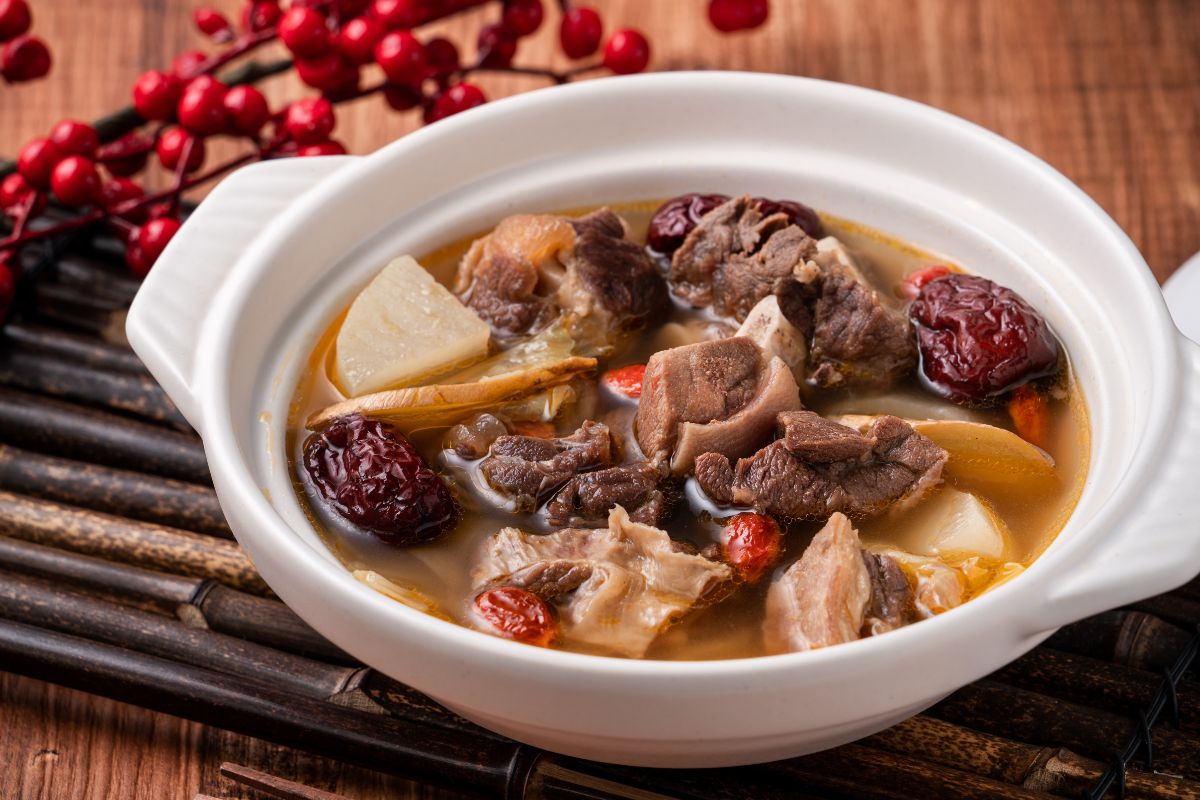
Sweet soups are equally beloved. The renowned sweet soup of White Fungus and Lotus Seeds is internationally acclaimed, where rehydrated white fungus torn into small pieces is combined with lotus seeds and simmered in water. Initially bringing the water to a boil over high heat and then simmering over low heat, intermittent stirring throughout the process prevents the white fungus from sticking to the pot.
Over time, the white fungus and lotus seeds soften gradually, thickening the soup. At this stage, adjust sweetness to personal preference by adding an appropriate amount of rock sugar. The sweet flavor of the rock sugar slowly dissolves into the soup, enriching its taste. Continue simmering until the rock sugar completely dissolves, signaling the completion of the White Fungus and Lotus Seeds soup. The entire cooking process requires patience and carefulness, akin to caring for family, with each step infused with love and warmth.
In family life, White Fungus and Lotus Seeds soup is often a staple dessert for family reunions and entertaining guests. As family members gather around, sharing this sweet soup, a warm ambiance fills the air.
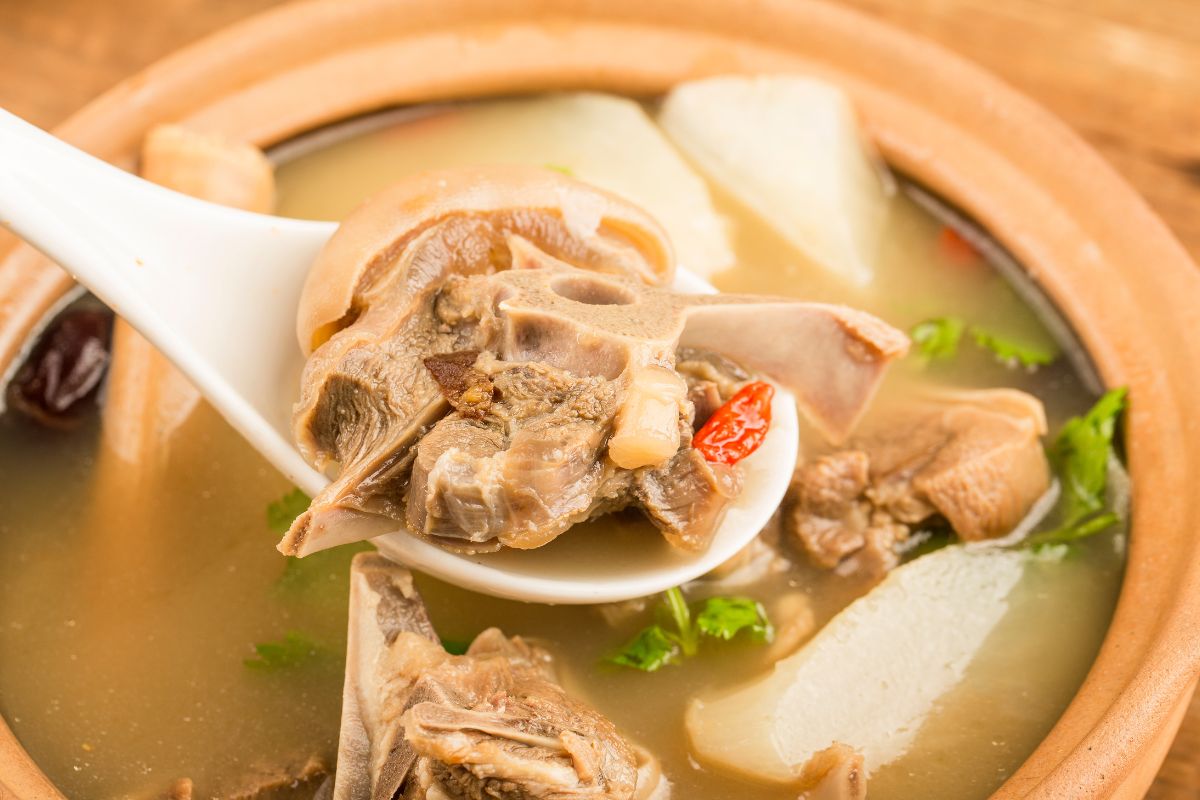
During certain traditional festivals or important occasions, the White Fungus and Lotus Seeds soup takes center stage on dining tables, symbolizing celebration and blessings. For instance, at weddings, the newlyweds sip a bowl of White Fungus and Lotus Seeds soup, symbolizing a sweet and harmonious marriage filled with lasting happiness; during the Spring Festival, this soup contributes to a festive, peaceful atmosphere, symbolizing a sweet start to the new year.
Time is a crucial factor in the soup-making process. Chinese believe that only through long hours of simmering can the nutritional essence of the ingredients be fully released into the soup. A pot of good soup often requires several hours, or even longer, of meticulous cooking.
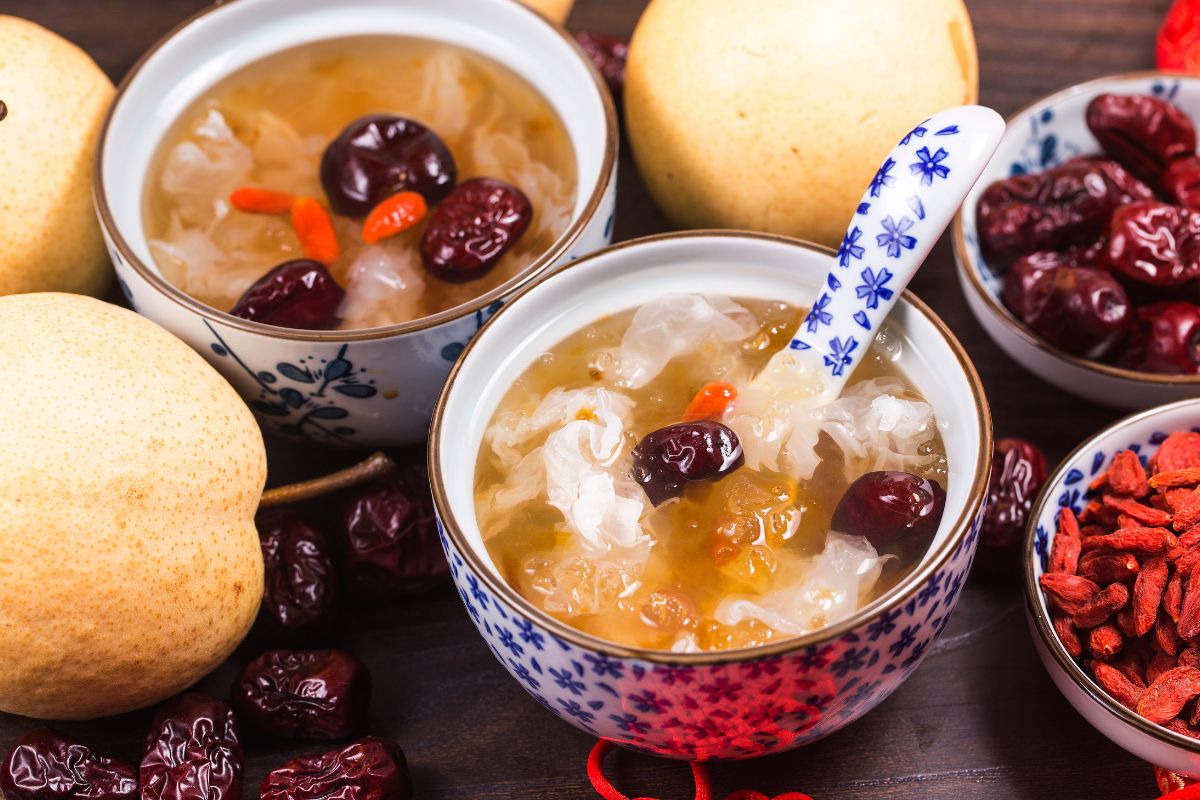
Throughout this process, the family's patience and care are interwoven. Elders rise early to select fresh ingredients from the market, return home to diligently clean and prepare them, simmering them slowly in a pot until the ingredients' nutrition营养(yíng yǎng) seeps into the soup, permeating the air with an enticing aroma.
营养 (yíng yǎng), noun, nutrition
Examples:
- Good nutrition is essential for a healthy life.
良好的营养对于健康生活至关重要。
liáng hǎo de yíng yǎng duì yú jiàn kāng shēng huó zhì guān zhòng yào 。 - A lack of proper nutrition can lead to various diseases.
缺乏适当的营养会导致各种疾病。
quē fá shì dāng de yíng yǎng huì dǎo zhì gè zhǒng jí bìng 。
On autumn and winter nights, as a family concludes a busy day, gathering around the dining table to sip on a steaming bowl of soup, bodies gradually warm, weariness dissipates. In this moment, soup transcends mere sustenance, becoming a form of emotional exchange and a conveyance of familial warmth. It allows individuals to feel the warmth and happiness of home in the cold seasons, deepening connections, embodying the true essence of family.
